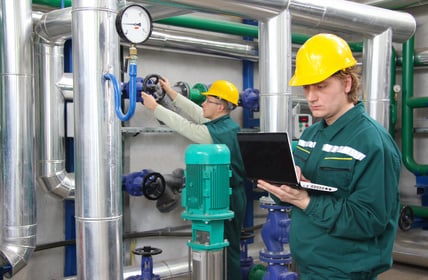This post was authored by Ned Espy, technical director at Beamex.
One advanced method for calibration techniques is based on the concepts of “loop tuning” or “shooting the loop.” In some cases, it is best practice to perform individual instrument calibration to achieve maximum accuracy (e.g. custody transfer metering). However, there are viable methods where a loop can be tested end-to-end and if readings are within acceptable tolerances, there is no need to break out  individual instruments for testing.
individual instruments for testing.
To be effective, a common sense approach is required with the goal to minimize downtime, maximize technician efficiency while ensuring reliable control and maintaining a safe work environment. It is important to note that individual instrument testing is the best practice to achieve maximum process measurement accuracy. During start-up and commissioning it is necessary to verify every instrument.
Also, for critical measurements, it may be best to calibrate all instrumentation to ensure the best reliability, quality, environmental and/or safe performance. However, many professionals perform “open loop” testing (some of the loop components are tested in series) or “closed loop” testing (full end-to-end test of a loop). Some specific loop test examples include temperature loop testing
However, many professionals perform “open loop” testing (some of the loop components are tested in series) or “closed loop” testing (full end-to-end test of a loop). Some specific loop test examples include temperature loop testing (probe + transmitter + DCS reading), multivariable transmitter testing, batch control, control valve testing and SIS testing (alarms or interlocks). Depending on the application, a hybrid solution may prove to be effective. It is also important to evaluate performance error and set reasonable tolerances for loop testing.
A common “closed loop” test example is a temperature loop consisting of an RTD probe which is connected to a transmitter which is then connected to a DCS input card which in turn displays the measured temperature on a screen. There are at least three components that could induce error into the measurement: the RTD probe, the transmitter and the A/D conversion by the DCS input card. Each component could be individually calibrated and such a task could take one to two hours depending on work methods.
However, a quick three-point check could be performed utilizing a dry block calibrator or bath to simulate temperatures to the probe while comparing the DCS readout. Such a test can be done under an hour. If the loop checks out, there has been minimum invasion to the process as compared to component testing. If the end-to-end measurement is accurate, it doesn’t really matter how the individual instrumentation is performing. If the loop fails, then individual components would need to be tested; in this example, most likely the RTD probe would be the culprit. If the failure rate is one-in-five, a savings of three man-hours per five tests might be typical. Also, fewer disturbances in wiring and connections will have obvious benefits.
In analyzing loop performance, it is important to note the loop is no more accurate than the least accurate component in the loop. In the temperature loop example, the probe may be accurate to ± 2ºF, the transmitter to ± 1ºF and the DCS input to ± 1ºF. Using an RMS average method, it would be fair to say the expected loop tolerance is ± 2.5ºF ([22 + 12 + 12].5).
By approaching the task of calibration with a fresh look, there are plenty of opportunities to “do more with less” and effectively “touch” every instrument in the plant more efficiently using loop calibration strategies. With careful planning, improved control performance can be expected without compromising quality, reliability or safety of plant operations.
Blog Posts
How Often Do Measurements Need to Be Calibrated?
Just in Time, or Just Too Late? A Kaizen Approach to Calibration
How to Improve Industrial Productivity with Loop Calibration
Temperature Calibration: Using a Dry Block to Calculate Total Uncertainty
How Can Advanced Calibration Strategies Improve Control Performance?
How to Calibrate a Pressure Transmitter
Webinar Recordings
Uncertainty in Calibration
Calibration Uncertainty and Why Technicians Need to Understand It
How to Avoid the Most Common Mistakes in Field Calibration
Learn Advanced Techniques in Field Calibration
How to Build an Industrial Calibration System Business Case
How to Use Calibration Tools for Accurate Process Temperature Measurement
How Does Low Flow Affect Differential Pressure Flowmeter Calibration?
Three Common Pitfalls of Pressure Calibration
Free Downloads
ISA Industrial Calibration Worksheets
Measurement Uncertainty Analysis Excel template plus book excerpt
Calibration Handbook of Measuring Instruments book excerpt
In-Depth Guide to Calibration for the Process Industries eBook
Calibration Uncertainty for Non-Mathematicians white paper
About the Author
Ned Espy has been promoting calibration management with Beamex for more than 20 years. He has directed field experience in instrumentation measurement application for over 27 years. Today, Ned provides technical & application support to Beamex clients and partners throughout North America.



